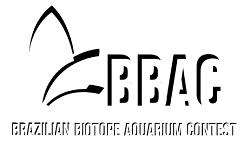Nkondwe Island intermediate zone, Tanzania – Lake Tanganyika




Emerson Souza Santos – Brasil
BIOTOPE IN NATURE: At 767 meters above sea level and approximately a little more than 7 km in a straight line, Nwkondwe Island (7°22’46.7″S 30°32’45.8″E) forms the Kipili Archipelago in Tanzania. The region contains several islands and islets of varying extents resulting in many tourist attractions such as diving, snorkeling, kayaking, sunset views and seasonal fishing.
The more than 2,000 km of coastline, which includes Lake Tanganyika, when divided into biotopes, has the following distribution: 43% rocks, 31% sand, 21% intermediate (rocks and sand) and 5% marsh.
The rocky biotope is by far the most representative of the lake and in it we find the greatest diversity of life and its respective ecological niches. I hope to contribute even more to the preservation and awareness of this environment.
Let’s go from intermediate environment in this proposal.
Canister filter (1200l/h), thermostat 200w, 9w cold white LED bulb, super white and blue LED (mixed) equivalent to 45w.
Indirect lighting 2 hours a day. Lighting of the aquarium with programmed photoperiod via timmer, for 7 hours.
Maragogi blue matte vinyl. Over 150kg of rocks of various sizes. Sand and river gravel rolled to compose the substrate part. Some plants in scarcity and empty snail shells.
Fishes:
Neolamprologus sp. ‘Cygnus’ (3)
Neolamprologus sp. ‘meeli-boulengeri’ (4)
Plants:
Vallisneria sp. (2)
